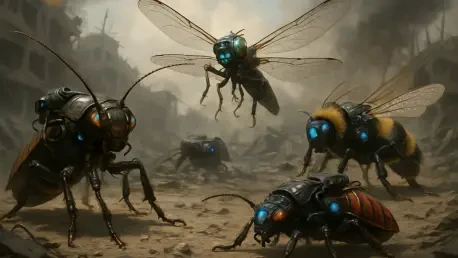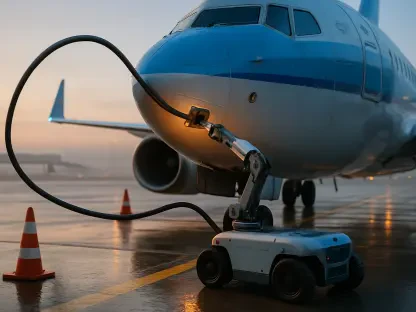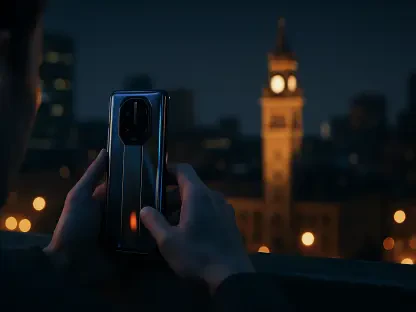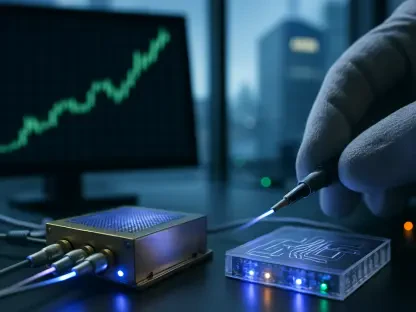In a groundbreaking endeavor that promises to transform disaster response capabilities, Nanyang Technological University (NTU) in Singapore has pioneered an automated cyborg insect assembly line. Led by Professor Hirotaka Sato, this innovative technology represents a monumental step forward in the realm of hybrid robotics, revolutionizing the efficiency and speed of assembling cyborg insects. The primary focus is on augmenting Madagascar hissing cockroaches with electronic backpacks, transforming them into mobile, controllable cyborgs designed for use in the most challenging environments. This transformative assembly process not only accelerates preparation times significantly but also mitigates the likelihood of human errors, which are prevalent in traditional manual assembly methods. The advancement has far-reaching implications, particularly in disaster response operations, where time is often a critical factor in saving lives. The innovative assembly line strips down the assembly time from an hour to just over a minute per insect, vastly outperforming manual methods and paving the way for large-scale deployment of these cyborg insects in real-world scenarios.
Revolutionizing Insect-Hybrid Robotics
The architects of this cutting-edge technology have seamlessly integrated artificial intelligence and robotics to enhance the natural abilities of insects, propelling them into highly functional tools in complex operation settings where conventional robots may find limitations. Unlike traditional robotics, these cyborg insects employ their organic limb movements with directional control steered through gentle electrical stimulations via implanted electrodes. These stimulants are part of lightweight circuits resting on their exoskeletons, facilitating precision navigation. The robotic assembly line, enhanced by AI, employs computer vision and an indigenous algorithm to ensure accurate placement of electrodes, consistently adapting to each cockroach’s anatomy. This level of precision and automation assures consistent performance, an essential attribute when deployed in unpredictable environments. Further developments within NTU’s laboratories have seen advancements in the efficiency of the backpack mechanisms themselves. Newly designed electronic units demand substantially less voltage, 25% fewer than previous models, to direct these insects without compromising on control. This enhancement prolongs operational duration and lowers the risk of overstimulation, rendering the cyborgs more sustainable and reliable for arduous operations.
Real-World Applications
A real-world application of these innovative cyborg insects was witnessed when NTU, in collaboration with the Singapore Civil Defense Force (SCDF), successfully deployed a team of 10 cyborg insects to assist in Myanmar following a catastrophic 7.7 magnitude earthquake. The disaster, which occurred on March 28, 2025, left over 3,000 casualties. In this mission, the cyborg insects proved to be remarkably effective in locating survivors within inaccessible areas, underscoring both their nimbleness and the advantage they hold over traditional robotic tools. This mission was a practical validation of the cyborg insects’ potential, affirming their critical role in situations where traditional technologies could falter due to accessibility challenges or short operational spans. The venture into Myanmar served as a promising precursor for future deployments, fostering crucial learnings and insights whose benefits extend beyond immediate humanitarian missions to also enhancing infrastructure robustness in responding to emergencies. The success of this operation ignited further interest and investment into scaling the production and deployment of cyborgs, ushering in an era where such biological hybrids could serve pivotal roles in diverse fields from infrastructure inspections to addressing ecological impacts in sensitive environments.
Towards Broader Horizons
The establishment of a comprehensive cyborg insect assembly line marks a vital initial phase towards dependable mass production, with its implications resonating beyond disaster relief into new domains demanding exacting inspection capabilities. This includes examining extensive civil structures for imperfections where human inspection is inefficient or impractical. Professor Hirotaka Sato’s seminal work in this ambitious project has received international recognition, having been featured prominently in acclaimed publications for its innovative nature. Sato’s pursuit remains tirelessly ingrained in refining the assembly system, ensuring it meets rigorous standards for industrial-level applicability while continuously collaborating with regional entities to evolve its efficacy. The challenge rests now on advancing the technology’s precision, production availability, and operational flexibility to sustain future demands. These continued efforts promise not just refined disaster-response mechanisms but herald the dawn of novel industrial applications powered by the confluence of living organisms and artificial technology in unprecedented synergies. The seamless fusion of robust robotic ingenuity with the inherent capabilities of insects not only challenges traditional perceptions but accelerates the advent of a new era in biotechnology and robotics.
A New Era in Disaster Response
In an innovative effort that could reshape disaster response strategies, Nanyang Technological University (NTU) in Singapore has developed an automated cyborg insect assembly line. Spearheaded by Professor Hirotaka Sato, this cutting-edge technology marks a significant advancement in the field of hybrid robotics, drastically enhancing the efficiency and speed of assembling cyborg insects. The primary aim is to augment Madagascar hissing cockroaches with electronic backpacks, turning them into mobile, controllable cyborgs optimized for hostile environments. This groundbreaking assembly method not only significantly reduces preparation time but also decreases the likelihood of human errors common in traditional manual processes. The impact is substantial, especially in disaster response scenarios where every second counts. This novel assembly line slashes the assembly duration from an hour to just over a minute per insect, greatly outperforming manual efforts and enabling the potential for widespread deployment of cyborg insects in real-world situations.









